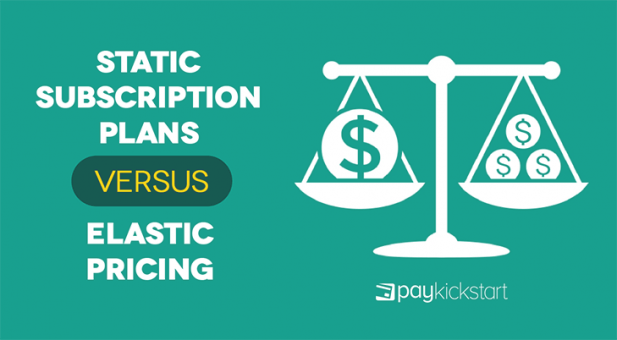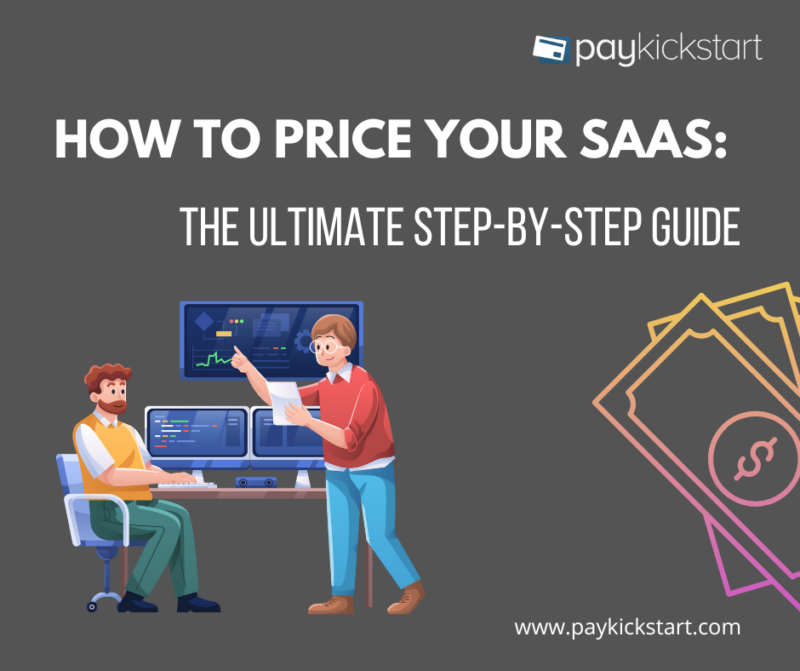Subscription growth hack (by PayKickstart)
Facebook Group - 3,932 members
Visit Group
These days, many companies focus on growing their monthly recurring revenues. This is especially true in the software development field. Rather than selling one-off installations, many developers now focus on providing Software-as-a-Service. This way, instead of receiving a single one-off payment, the software provider can receive steady, reliable subscription income.
However, two competing payment models have emerged. On one hand, there’s the traditional static subscription model. Under this model, companies charge a “static” fee in a given time frame, say a year or a month. A $9.99 monthly Netflix subscription fee is one example of a static subscription. These days, static subscription plans are very common, and you’re most likely signed up for a few yourself. PayKickstart also offers static subscription fees:
Recently, however, another revenue model has been gaining popularity. The so-called “elastic” pricing model seeks to build customized relationships with customers and customer segments. With elastic pricing plans, pricing isn’t static and over time the relationship and fees will evolve.
We’re going to an in-depth take a look at static subscription versus elastic pricing. But first, let’s also take a glance at why companies prefer monthly recurring revenues.
Many businesses prefer recurring revenue rather than one-off payments. It’s not hard to understand why. With recurring revenue, companies can continue to make money so long as clients are using the software. For example, if a customer uses software for five years or ten years, the company will be able to charge fees throughout.
On the other hand, if a company sells the software as a stand-alone product, it will collect only one payment. It doesn’t matter if the customer uses the software for one year or ten years, the developer only collects one payment.
In the past, developers would develop “editions” of software. In 1987, Microsoft released Word for Windows 2.0. A couple of years later they released Word for Windows 95, and then “Word 97” came along. Why the different iterations? Since companies were paid only once for their software, they’d develop different iterations, adding new features and other benefits in future editions.
Word has evolved over the years. Check out Word 2.0
As a result, companies often had numerous editions of software floating around. This was a headache for both end-users and the software developers themselves. However, with recurring revenues, companies can now focus on developing and refining a constantly evolving version of their software.
Windows, for example, now offers Office 365. With Office 365, it doesn’t matter if you signed up in 2017 or last week, you’ll always have access to the same software. This means customers will continue to enjoy ever improving features and functionality.
As such, recurring revenue models can actually be beneficial for both customers and companies alike. This is were static subscription and elastic pricing models come in. Both models enable recurring revenues but there are some differences between them.
Let’s take a look at the more traditional subscription model first and then go over the elastic model.
Static subscription plans are pretty straightforward. You simply pay a specified amount over a specific time period, and in exchange, you’ll gain access to products or services. Most often, you’ll pay either a monthly or annual fee.
Software-as-a-Service providers often offer subscription plans. Many non-SaaS companies also offer subscriptions. You can subscribe to monthly produce deliveries, news websites, home care products, and more. Usually, if a customer requires regular, consistent access to a product or service, you can charge a subscription fee. You can even “subscribe” to an automobile through a lease, for example.
Simply because you charge a static subscription plan, that doesn’t mean that you charge only a single, flat price. You can (and usually should) charge different prices for different tiers of service. This way, you can offer customers a choice and can bring in extra revenues by offering more features or expanded services.
Take Netflix, for example. The company offers three different static subscription plans. Each plan comes with its own unique mix of features and benefits. The basic plan, for example, doesn’t offer HD. While the premium plan offers “Ultra HD” and the standard plan offers basic “HD”.
Even though there are multiple plans, the subscription plans and your pricing model are “static.” There may be a small number of choices, but at the end of the day, customers are limited to those few choices.
Some companies are now turning to elastic pricing. Let’s take a look at how that works.
First, elastic pricing models often include subscription fees. However, these fees are not static. Instead of offering customers a few different subscription plans, elastic pricing models allow customers to basically build their own plan.
Consider Amazon Web Services. The company offers a plethora of different services, from cloud storage and word processing to advanced artificial intelligence. Owing to the huge number of different services, it doesn’t make sense to offer customers a few static subscription plans.
Some of AWS’s many products and services.
While many companies will require cloud storage, far fewer will need access to blockchain technology. If Amazon tried to use a static subscription model, they’d have to charge high fees to every customer. By using elastic pricing, Amazon can charge customers only for what they need.
Elastic pricing focuses on building a relationship with the client. By offering so many different choices, elastic pricing models allow customers to build a custom plan that best fits their needs.
So should you use elastic pricing or a static subscription model? This largely comes down to your products and services and how beneficial customization plans will be for customers. If you offer a huge range of products and services, an elastic model may make more sense.
At PayKickstart, we use a static subscription model because we’re currently focused on offering the best shopping cart in the world. If we start to offer different services, say advanced e-commerce marketing tools, we might shift to an elastic model.
Both static subscription and elastic pricing models can be effective. By focusing on recurring revenue, you’ll be able to create reliable revenue streams. With steady income coming in, you can continue to refine your product and service offerings.
Whether you should use elastic pricing or a static subscription comes down to your particular business model. If you offer a tightly knit range of products and services, a static model makes sense. On the other hand, if you offer a wide, disparate range of products and services, an elastic model will probably work better.
Michael Harbone is an experienced copywriter, writing professionally since 2017. He has written for multiple digital marketing companies gaining the reputation for writing engaging, concise articles one which received an award from Upcity.
Read More About Michael Harbone